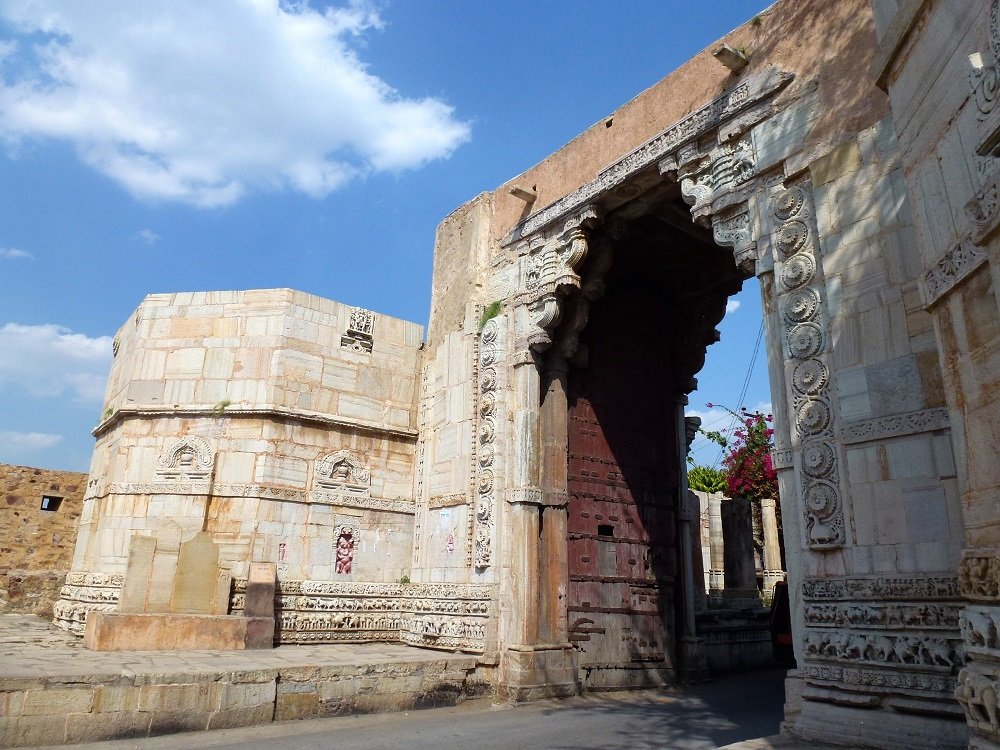Rajasthan is a glorious state with innumerable forts and palaces that have stood witness to some of the most incredible historical events. Time and again, the regal history of Rajasthan has captured the imagination of movie directors. And this time, the centre of attraction is the fort of Chittorgarh.
A UNESCO world heritage site, the Chittor fort stands atop a 180 metres high hill spreading across 700 acres and tells the tale of Rani Padmavati, the Rajput queen who immolated herself instead of submitting to Allaudin Khilji.
Here’s what the grand fort entails:

There’s a one-mile long tortuous road that leads to the fort which has 7 entry gates, each one secured with strong iron-spiked doors. These seven gates, called pol in the local language, are named as Padam Pol, Bhairon Pol, Hanuman Pol, Jorla Pol, Ganesh Pol, Laxman Pol & Ram Pol.

The fort has a Padmavati palace where queen Padmavati used to live. It is from this three-storied white building, overlooking a pond, that Alauddin Khalji got a glimpse of the beautiful Mewar queen and waged a war against her husband Rawal Ratan Singh.

Rana Kumbha Palace
It’s a 15th-century palace where the ruler of Mewar Maharana Kumba lived. It’s one of the most remarkable and majestic monuments of the Chittor fort. It is also believed that the palace has underground cellars where Rani Padmini and other women committed Jauhar (self immolation).

Originally, there were 84 water bodies within the fort with a collective capacity of holding one billion gallons of water. It was enough to quench the thirst of 50,000 soldiers for four years! But today, only 24 water bodies are left, including the ponds, wells and step wells.

Tower of Victory or Vijay Stambh
It’s a 9-storeyed victory monument built in 1440 AD by Maharana Kumba of Chittor commemorating his triumph over Mohammad Khilji. The tower, dedicated to Lord Vishnu, is a great expression of religious pluralism practiced by the Rajputs. While the topmost story has images of the Jain Goddess, the third & the eighth stories have the word Allah carved inside.
After climbing 157 stairs to reach the uppermost level, one can have a panoramic view of the beautiful Chittorgarh city.

Kirti Stambh
This 22-metre high tower was built by a wealthy Jain merchant during the reign of Rawal Kumar Singh in the 12th century to glorify Jainism. Built in the Solanki style, the tower is 30 feet wide at the base and tapers towards the top. It’s dedicated to Adinath, the first Jain Teerthankar.

Meera Temple
When Meera Bai, a devotee of Lord Krishna, came to Chittorgarh after marrying Bhoj Raj – the crown prince of Mewar – she requested to build a Krishna temple for worshiping Lord Krishna. So Maharana Sangram Singh, Meera Bai’s father in law, built a small temple adjacent to Kumbha temple which later came to be known as the Kumbha Shyam Temple.

Fateh Prakash Palace
Fort Fateh Prakash Palace served as the residence for Maharana Pratap. With a huge number of paintings, remarkable frescoes, sculptures and crystal objects in the palace, a huge part of it was converted into the museum in 1968.

Jain temples
There are six temples within the boundary of the majestic Chittorgarh fort. The biggest of these temples is Bhagwan Adinatha temple which houses 52 devkulikas inside the premise.

That’s the grand Chittorgarh fort for you.

















